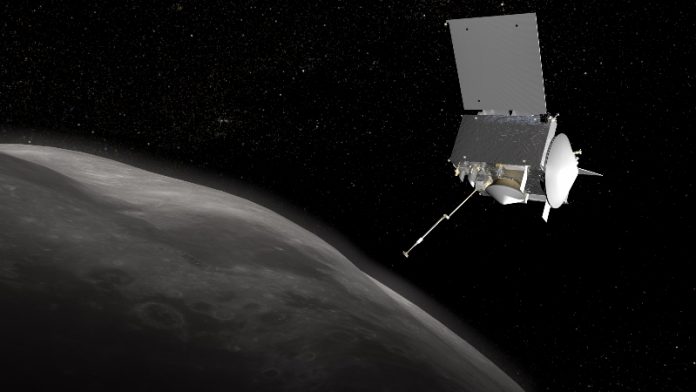Science and Technology
Move over chemo, now harness the immune system to fight cancer
- Harnessing the immune system to fight cancer, long a medical dream, is becoming a reality
- Use of immunotherapy instead of traditional chemotherapy – Rather than attacking the cancer directly, as chemo does, immunotherapy tries to rally the patient’s own immune system to fight the disease. This is a fundamental change in the way that we think about cancer therapy
- The immune system — a network of cells, tissues and biochemicals they secrete — defends the body against viruses, bacteria and other invaders. But cancer often finds ways to hide from the immune system or block its ability to fight.
- Immunotherapy tries to help the immune system recognise cancer as a threat, and attack it.
What is immunotherapy?
- A widely used type of immunotherapy involves drugs that free immune cells to fight cancer by blocking a mechanism — called a checkpoint — that cancer uses to shut down the immune system.
- These drugs, calledcheckpoint inhibitors, have been approved by the Food and Drug Administration to treat advanced melanoma
- Patients are clamouring for checkpoint drugs, including one,Keytruda, known to many as “that Jimmy Carter drug” which, combined with surgery and radiation, has left the former president with no sign of recurrence even though melanoma had spread to his liver and brain.
Kudankulam plant safest in the world, says Russian official
The Kudankulam Nuclear Power Plant (KKNPP) is the first in the world to have post-Fukushima safety enhancement requirements implemented and operated successfully
While Unit 1 at Kudankulam is functional and producing electricity after initial hiccups, Unit 2 had attained criticality on July 10 and is planned to be connected to the grid in August.
Safety Features
- There are a number of advanced active and passive safety systems which ensure unprecedented design-level nuclear and ecological safety of the plant
- Double localising and protective containment, passive heat removal system from reactor plant automatically, core catcher, and closed industrial water intake are some of the safety features incorporated.
- The reactor is protected from the impact of any earthquake, tsunami, tornado and hurricane.
Sea Water
- Given that a large amount of seawater is drawn in to cool the reactors, measures have been taken to preserve the biological diversity of the Mannar Bay adjacent to Kudankulam.
- Seawater is supplied from the so-called “bucket” constructed in the sea into the special facilities and systems which ensure that fish and plankton return to sea.
India and Russian Nuclear Cooperation
- As part of India-Russia nuclear cooperation, the Rosatom state nuclear corporation is scheduled to construct six units of VVER-1000 light-water reactors at Kudankulam.
- In December 2014, both sides announced a decision for the construction of at least 12 more units in India.
- On India’s request, additional safety measures are being enforced in Units 3 and 4 to withstand even higher seismic, climatic and technical impact
- On Units 5 and 6, in November 2015, Russia submitted the technical-commercial offer and their design had been agreed upon.
- In February, a road map for construction of Units 5 and 6 prior to the General Framework Agreement (GFA) has been signed. The GFA is expected to be signed in autumn this year Russia is awaiting.
NASA to explore asteroid Bennu during its close encounter with Earth
A near-Earth asteroid that is coming towards our planet after being dislodged by a gravitational pull can indeed strike us and cause massive destruction, but according to experts, it has a only a one in 2,700 chances of hitting.
Such an event will not take place for 150 years and the people living in the year 2135 would know whether the asteroid named Bennu posed an actual threat to hit Earth
OSIRIS-REx Mission
- It is headed by NASA and the University of Arizona, plans to launch an unmanned spacecraft on September 8 in efforts to reach Bennu in August 2018.
- OSIRIS-REx will launch from Cape Canaveral, Florida, on an Atlas V 411 rocket
- In August 2018, OSIRIS-REx’s approach to Bennu will begin. It will use an array of small rocket thrusters to match the velocity of Bennu.
- The spacecraft will begin a detailed survey of the asteroid two months after slowing to encounter Bennu. After the selection of the final site, the spacecraft will briefly touch the surface of Bennu to retrieve a sample
- The sampling arm will make contact with the surface for about five seconds, during which it will release a burst of nitrogen gas. This will cause rocks and surface material to be stirred up and captured in the sampler head
- In March 2021, the window for departure from the asteroid will open and OSIRIS-REx will begin its return journey to Earth, arriving two and a half years later in September 2023
What are asteroids?
- Asteroids are small, airless rocky worlds revolving around the sun that are too small to be called planets. They are also known as planetoids or minor planets.
- In total, the mass of all the asteroids is less than that of Earth’s moon. But despite their size, asteroids can be dangerous. Many have hit Earth in the past, and more will crash into our planetin the future.
What Are The Differences Between An Asteroid, Comet, Meteoroid, Meteor and Meteorite?
- Asteroid: A relatively small, inactive, rocky body orbiting the Sun.
- Comet: A relatively small, at times active, object whose ices can vaporize in sunlight forming an atmosphere (coma) of dust and gas and, sometimes, a tail of dust and/or gas.
- Meteoroid: A small particle from a comet or asteroid orbiting the Sun.
- Meteor: The light phenomena which results when a meteoroid enters the Earth’s atmosphere and vaporizes; a shooting star.
- Meteorite: A meteoroid that survives its passage through the Earth’s atmosphere and lands upon the Earth’s surface.
First human genetic editing trial in China
Chinese scientists will perform the world’s first genetic editing trial on humans this month, in an attempt to find a cure for lung cancer.
A group of oncologist at the West China Hospital of Sichuan University, Chengdu, will inject patients with cells that have been modified using the CRISPR-Cas9 gene-editing technique
What is CRISPR?
- CRISPR, short for clustered regularly interspaced short palindromic repeats, was named “2015 Breakthrough of the Year” by the U.S. journal Science.
- It allows scientists to selectively edit genome parts and replace them with new DNA stretches.
- Cas9 is an enzyme that can edit DNA, allowing the alteration of genetic patterns by genome modification.
- CRISPR is a collection of DNA sequences that direct Cas9 where to cut and paste.
What doctors will do?
- Doctors will extract T cells, a type of immune cell, from the patient’s blood and then knock out the gene that encodes the PD-1 protein, which normally limits the cell’s capacity to launch an immune response.
- The edited cells will be multiplied in the lab before being reintroduced to the patients.
- This process will hopefully kick-start the T cells to launch an attack on the tumour cells.
- It is like building a cancer-fighting army outside the patient body
IBM’s technology may help detect cancer early
Scientists at IBM have developed a new lab-on-a-chip technology that can, for the first time, separate biological particles at the nanoscale and could help detect diseases such as cancer before symptoms appear.
- Researchers showed size-based separation of bio particles down to 20 nano-metres (nm) in diameter, a scale that gives access to important particles such as DNA, viruses and exosomes.
- Once separated, these particles can be analysed to potentially unveil signs of disease even before patients experience any physical symptoms and when the outcome from treatment is most positive.
- Until now, the smallest bioparticle that could be separated by size with on-chip technologies was about 50 times or larger, for example, separation of circulating tumour cells from other biological components.
- Exosomes are increasingly being viewed as biomarkers for the diagnosis and prognosis of malignant tumours. They are released in easily accessible bodily fluids such as saliva, urine or blood. They represent a precious biomedical tool as they can be used in the context of less invasive liquid biopsies to unveil the origin and nature of a cancer.
Existing challenges
- Researchers targeted exosomes with their lab-on-chip technology as existing scientific techniques face challenges for separating and purifying exosomes in liquid biopsies.
- Exosomes range in size from 20-140nm and contain information about the health of the originating cell that they are shed from.
- A determination of the size, surface proteins and nucleic acid cargo carried by exosomes can give essential information about the presence and state of developing cancer and other diseases.
- Researchers showed they could separate and detect particles as small as 20 nm from smaller particles, that exosomes of size 100 nm and larger could be separated from smaller ones, and separation can take place in spite of diffusion, a hallmark of particle dynamics at these small scales.
AYUSH drugs to get trial guidelines
- To bring research on Ayurvedic drugs and formulations closer to practices in Western medicine, the Indian Council of Medical Research has released a set of guidelines concerning standards that must be adhered to in testing medicines from AYUSH (Ayurveda, Yoga, Unani, Siddha and Homeopathy) schools.
- The draft guidelines say that research on traditional and folk medicines and patented and proprietary varieties of traditional medicines involving human participants must be done using the same ethical principles under which drug trials are conducted.
IPR and patents
- If a mix of medicinal systems are involved, then there ought to be experts from each of those fields supervising trials and if a product deriving from traditional knowledge were to be commercialised, the“legitimate rights/share of the tribe or community from which the knowledge was gathered should be taken care of appropriately while applying for Intellectual Property Rights and patents for the product”
- The guidelines deal with emerging fields of research such as synthetic biology and ethical rules governing medical diagnostics, and specify that all participants be made aware of the risks and not be offered undue inducements to participate in the trial of a new drug.
Clinical trials
- India has several sets of guidelines governing the conduct of clinical trials and stem cell research that are updated from time to time. However, there has been little clarity on how Ayurvedic formulations and other traditional medicines ought to be tested. This is a positive step and is important for traditional Indian formulations to be able to access international markets.
- A range of companies are employing new approaches such as genetic analysis or trying to determine the molecular basis of the effectiveness of traditional formulations.
- Among others, one of India’s top pharmaceutical companies, Sun Pharma, has entered into a deal with the International Centre for Genetic Engineering and Biotechnology to develop a herbal drug for dengue earlier this year.
- The ICMR guidelines are not a precursor to a law though adherence to them is required by India’s drug regulator to grant permission for trials.
- India has frequently seen controversies over the improper conduct of clinical trials and there is a proposed amendment to the Drug and Cosmetics Act that seeks to impose stricter penalties for those found violating clinical trial guidelines.
Dwindling prey bad news for big cats, wolves, says study
- The world’s top land carnivores such as tigers, lions and jaguars are coming under threat as their prey dwindles in number, according to the first global study of feeding patterns.
- There are only 17 four-legged predators — big cats, wolves and wild dogs — that weigh more than 15 kilos and whose diet is at least 70 per cent meat. Collectively, these fearsome carnivores feed on nearly 500 species, ranging in size from mice to buffaloes.
- But aquarter of these are themselves listed as threatened by the International Union for the Conservation of Nature (IUCN), which tracks the health of the planet’s fauna and flora.
- An expanding human footprint has also reduced the vast areas these wide-ranging hunters need to thrive—on average, it takes about 10,000 kilos of prey to support 90 kilos of carnivore biomass, whether a scrawny dingo or a strapping lion.
Heavy rainfall not linked to global warming, says IIT study
- A study carried out by researchers at IIT Bombay has found that extreme rainfall events over India do not have significant association with land surface air temperature over India and sea surface temperature over the central Indian Ocean.
- The results are contrary to the general notion that increased summer temperature is responsible for extreme summer monsoon rainfall events witnessed in some parts of India.
- The claim is not really that climate change is not important. But the novel results indicate that the local warming is not the controlling factor.
- The clues are in the rapid warming of the Indian Ocean and the changing roles of the Arabian Sea, Bay of Bengal and the Indian Ocean in monsoon variability and extremes. It is the non local controls that are of great importance
- The new generation climate model and historical simulations tend to over-estimate the association between extreme rainfall events and temperature.
- We must be careful while using climate change for estimating future changes in extreme rainfall with increasing temperature over India and Central Indian Ocean.
India to run short of high-tech minerals
- India will be woefully short of critical minerals necessary for developing clean-energy applications, infrastructure for its solar mission and for manufacturing high-technology products in the future.
- The country will be heavily dependent on China in the coming years to source these materials for its manufacturing sector, says a report commissioned by the Department of Science and Technology
- The study, conducted by the think-tank Council on Energy Environment and Water, identifies 12 minerals out of 49 that were evaluated as ‘most critical’ for India’s manufacturing sector by 2030.
- These are beryllium, chromium, germanium, limestone, niobium, graphite, rare earths, rhenium, strontium, tantalum and zirconium.
- Other minerals like limestone and graphite, while currently abundantly available in India, are deemed ‘critical’ because extractable resources could be scarce in the future.
- For others, the report says, India is 100 per cent import-dependent for seven out of 12 identified critical minerals and does not have any declared resources for them, except light rare-earths (found along with monazite sands) and beryllium.
- Rare earthsare a group of 17 minerals necessary for making everything from nuclear reactors to flat-screen televisions, and, China currently controls 94% of their global supply.
Firming up trade
- India, therefore, will need to firm up diplomatic trade channels and long-term supply contracts
- Almost a quarter of India’s GDP now comes from manufacturing, though this is currently dominated by low-value industries.
- The pricey minerals are used in industries and sectors such as aerospace, automobiles, cameras, defence, entertainment systems, laptops, medical imaging, nuclear energy, and smartphones
- China is currently a leading global supplier for six out of the 12 mineral resources identified as critical for India by 2030.
- Though India is endowed with vast mineral resources — it is among the top five nations with reserves of rare-earth minerals — its potential is untapped.
- For instance, minerals and metals such as bismuth, cadmium, gallium, germanium, indium, molybdenum, rhenium, selenium and tin are generally recovered as a by-product during processing of primary ores (lead, zinc, copper, molybdenum and aluminum).
‘Lost opportunity’
- “India has high production for these primary metals, yet no sign of by-product recovery [except tin] is evident so far. This is a lost opportunity, and demands suitable R&D interventions and policy support,
- The CEEW study comes on the heels of the National Mineral Exploration Policy, 2016 (NMEP).
ScatSat- 1 to help in predicting cyclones
India is set to acquire the capability for more accurate prediction and tracking of cyclones, with the launch of the ScatSat-1 satellite in September.
Salient Features
- The indigenously developed weather forecasting satellite will be equipped with on board instruments to monitor sea surface winds and help predict the genesis of cyclones
- The primary payload of ScatSat-1 is a scatterometer to keep a watch on the speed and direction of ocean winds that indicate the formation and strengthening of cyclones.
- The satellite will have the capacity to monitor temperature and humidity and transmit 48 images per day.
- The best thing about this 301 kg satellite is that it is being built at 60% of the actual cost, and in one-third of the estimated time.
- About 40% of satellite is made by recycling the leftover equipment from previous satellite missions.
- It is a polar orbiting satellite that will take two days to cover the globe. The data will be used by NASA, European Organisation for the Exploitation of Meteorological Satellites, and National Oceanic and Atmospheric Administration as well.
- Scheduled to launched by the PSLV- C35, the satellite is expected to replace Oceansat-2 which is out of service after completing its life span.
What is scatterometer?
- A scatterometer in the satellite will help predict formation of cyclones in the seas. Such predictions help in timely evacuation and minimise human casualties.
- A scatterometer is a microwave radar sensor. It measures the scattering effect produced while scanning the surface of the Earth from an aircraft or a satellite.
- It will measure the direction and speed of winds over the seas and oceans.
Background
- SCATSat-1 is an OceanSat-2 follow-up mission, actually a gap-filler mission between OceanSat-2 and -3, under development at ISRO (Indian Space Research Organization) with the objective to continue the global ocean wind vector data acquisition started by the OSCAT (OceanSat-2 Scanning Scatterometer).
- The satellite has been designed to withstand multiple system failures, unlike the last one.
- The information of global ocean surface winds is an important ingredient for weather forecasts. In particular, a need for global coverage of scatterometer data became evident, when NASA’s SeaWinds scatterometer on the QuikSCAT spacecraft ceased nominal operations in November 2009.
- Currently India is dependent on NASA’s ISS-RapidScat for prediction of cyclone forecasting and weather prediction
Doppler radar to boost weather forecasting
In a bid to improve weather forecasting services, Indian Space Research Organisation has commissioned a Doppler weather radar at the Vikram Sarabhai Space Centre (VSSC), Thiruvanthapuram.
The C- band Polarimetric Doppler weather radar (C-DWR)
- It is the first of its kind in South India.
- The data generated by the DWR would be shared with the India Meteorological Department to supplement its prediction.
- It would be made available to researchers and other user agencies also.
- The only other C- DWR in the country is at Chirapunji.
- Two more units are coming up at Bhuj in Gujarat and Gopalpur in Odisha.
- The DWR is expected to aid rainfall estimation and detect thunderstorm, cyclones and other severe weather events within a radius of 400 km.
Features
- It has instruments to measure rainfall intensity, wind shear and velocity and locate a storm centre and the direction of a tornado or gust front.
- Equipped with a parabolic dish antenna and a foam sandwich spherical radome, the radar is designed to improve precision in long range weather forecasting and surveillance using the Doppler effect.
- It works by bouncing a microwave signal off a target and analysing how the object’s motion has altered the frequency of the return signal.
It’s another giant leap, says Moon Express co-founder
An Indian American entrepreneur has begun a countdown for launching a moon lander next year after the Federal Aviation Administration (FAA) announced it has approved his company’s venture.
Naveen Jain, the founder of Moon Express, termed the U.S. government’s approval for the MX1-E moon lander “another giant leap for humanity.”
Moon Express
- The company was co-founded in 2010 by space visionary, Dr Bob Richards, Naveen Jain and serial entrepreneur and artificial intelligence and space technology guru Dr Barney Pell.
- The MX-1 will ride to the moon orbit on a space vehicle from Rocket Lab USA.
- One of that company’s backers is Khosla Ventures created by Vinod Khosla, the venture capitalist who is an Indian Institute of Technology-Delhi graduate and who co-founded Sun Microsystems.
- Moon Express CEO Bob Richards cited the discovery of water on the moon as an incentive for lunar ventures.
- The discovery was accomplished by the Indian Space Research Organization’s (ISRO) Chandrayaan-1 spacecraft with ISRO’s Moon Impact Probe (MIP) and NASA’s Moon Mineralogy Mapper (M3).
- The recent discovery of water on the moon is an economic game changer for humanity’s future. Water is the oil of the solar system and the moon has become a gas station in the sky.
- Moon Express is the first private company to get government approval for a moon venture.
- The FAA described the MX-1E as a spacecraft that can orbit to the moon, make a soft landing on the lunar surface, and move on it by making “hops”.
Moon Express needed the FAA approval because the Outer Space Treaty requires private ventures to be authorised by a government that has signed the treaty.


















